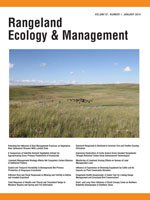Most wildfires occur during summer in the northern hemisphere, the area burned annually is increasing, and fire effects during this season are least understood. Understanding plant response to grazing following summer fire is required to reduce ecological and financial risks associated with wildfire. Forty 0.75-ha plots were assigned to summer fire then 0, 17, 34 or 50% biomass removal by grazing the following growing season, or no fire and no grazing. Root, litter, and aboveground biomass were measured before fire, immediately after grazing, and 1 yr after grazing with the experiment repeated during 2 yr to evaluate weather effects. Fire years were followed by the second driest and fifth wettest springs in 70 yr. Biomass was more responsive to weather than fire and grazing, with a 452% increase from a dry to wet year and 31% reduction from a wet to average spring. Fire reduced litter 53% and had no first-year effect on productivity for any biomass component. Grazing after fire reduced postgrazing grass biomass along the prescribed utilization gradient. Fire and grazing had no effect on total aboveground productivity the year after grazing compared to nonburned, nongrazed sites (1 327 vs. 1 249 ± 65 kg · ha−1). Fire and grazing increased grass productivity 16%, particularly for Pascopyrum smithii. The combined disturbances reduced forbs (51%), annual grasses (49%), and litter (46%). Results indicate grazing with up to 50% biomass removal the first growing season after summer fire was not detrimental to productivity of semiarid rangeland plant communities. Livestock exclusion the year after summer fire did not increase productivity or shift species composition compared to grazed sites. Reduction of previous years' standing dead material was the only indication that fire may temporarily reduce forage availability. The consistent responses among dry, wet, and near-average years suggest plant response is species-specific rather than climatically controlled.
How to translate text using browser tools
1 January 2014
Semiarid Rangeland Is Resilient to Summer Fire and Postfire Grazing Utilization
Lance T. Vermeire,
Jessica L. Crowder,
David B. Wester
ACCESS THE FULL ARTICLE
drought
grassland
herbivory
prescribed burn
productivity
wildfire





